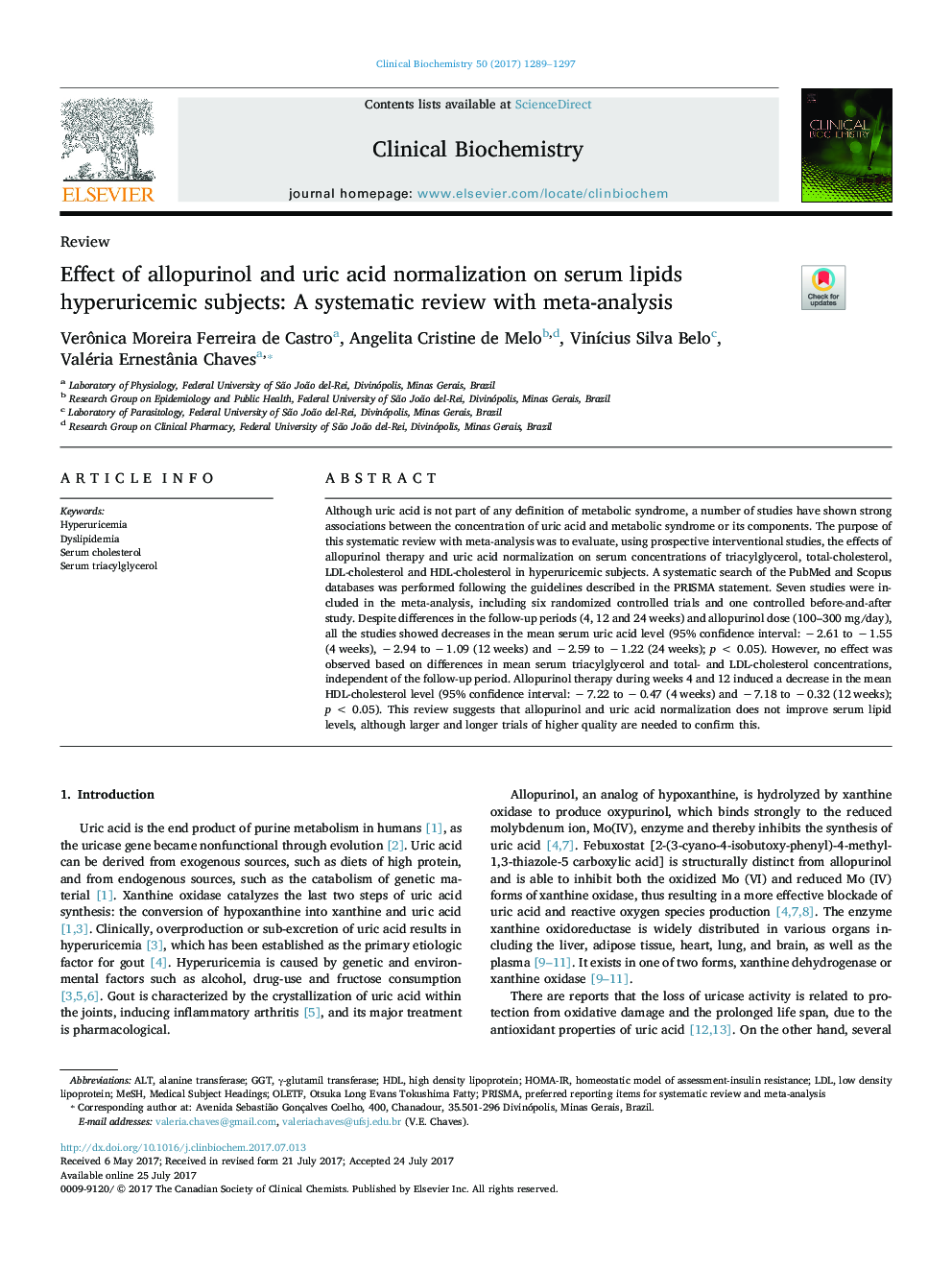| Article ID | Journal | Published Year | Pages | File Type |
|---|---|---|---|---|
| 8317147 | Clinical Biochemistry | 2017 | 9 Pages |
Abstract
Although uric acid is not part of any definition of metabolic syndrome, a number of studies have shown strong associations between the concentration of uric acid and metabolic syndrome or its components. The purpose of this systematic review with meta-analysis was to evaluate, using prospective interventional studies, the effects of allopurinol therapy and uric acid normalization on serum concentrations of triacylglycerol, total-cholesterol, LDL-cholesterol and HDL-cholesterol in hyperuricemic subjects. A systematic search of the PubMed and Scopus databases was performed following the guidelines described in the PRISMA statement. Seven studies were included in the meta-analysis, including six randomized controlled trials and one controlled before-and-after study. Despite differences in the follow-up periods (4, 12 and 24 weeks) and allopurinol dose (100-300 mg/day), all the studies showed decreases in the mean serum uric acid level (95% confidence interval: â 2.61 to â 1.55 (4 weeks), â 2.94 to â 1.09 (12 weeks) and â 2.59 to â 1.22 (24 weeks); p < 0.05). However, no effect was observed based on differences in mean serum triacylglycerol and total- and LDL-cholesterol concentrations, independent of the follow-up period. Allopurinol therapy during weeks 4 and 12 induced a decrease in the mean HDL-cholesterol level (95% confidence interval: â 7.22 to â 0.47 (4 weeks) and â 7.18 to â 0.32 (12 weeks); p < 0.05). This review suggests that allopurinol and uric acid normalization does not improve serum lipid levels, although larger and longer trials of higher quality are needed to confirm this.
Keywords
Related Topics
Life Sciences
Biochemistry, Genetics and Molecular Biology
Biochemistry
Authors
Verônica Moreira Ferreira de Castro, Angelita Cristine de Melo, VinÃcius Silva Belo, Valéria Ernestânia Chaves,
